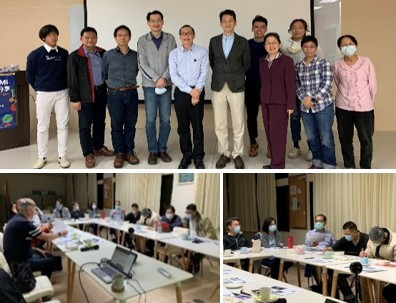Abstract
Summarized Implementation Report-EMI Teaching and Learning Centre, College of Engineering, National Chung Cheng University
For running the BEST program, a college-level EMI office, named EMI Teaching and Learning Centre, was established in last October and collaborated with the university-level EMI office. The major tasks include:
- Enhancing teachers' teaching capacity: hold workshops for teaching in English, offer training courses, take online learning courses of the Cambridge University Certificate in EMI skills, and recruit full-time EMI teachers.
- Increasing number of professional EMI courses: encourage teachers to teach in English, develop online learning system, offer professional EMI courses.
- Enhancing students' English proficiency: offer EAP and ESP courses for students, encourage students to take English proficiency tests.
- Organizing advisory committee and Ensuring course quality: Adjust strategies of BEST program according to advisory committee, improving courses quality according to students' comments.
Fig 1. The promotion framework of our program
Departments at the College of Engineering is in cooperation with the Centre to run the program, including offering EMI courses and recruiting qualified EMI teachers. There are 52 teachers providing EMI courses in this academic year. According to class observation, 82.8% of classes fully met the BEST project definition of EMI in teaching and learning. In 21/22, we provided 35, 86, and 68 EMI courses in Undergraduate, Master, and Doctoral levels, respectively. The average teacher talking time is 59.9% amount across all classes observed, as to the interaction, including TSI and SSI, are 35.6% across all classes observed. The average student satisfaction score for EMI courses was 89.19 out of 100 in the first semester of this academic and 89.73 out of 100 in the second semester.
In this year, 37 of 42 KPIs are achieved, or 88% of KPI are achieved. The key KPI that domestic student population at sophomore level is expected to reach B2 level is shown as the following table.
| Number of students | LR CEFR B2 or above | LRSW CEFR B2 or above | Amount | 21/22 KPIs | |
| Freshman | 375 | 81 (+12) (21.6%) | 7 (+1) (1.9%) | 88 (23.5%) | |
| Sophomore | 366 | 82 (+5) (22.4%) | 8 (2.2%) | 90 (24.6%) | 74 (20%) |
| Junior | 335 | 67 (20.0%) | 3 (0.9%) | 70 (20.9%) | |
| Senior | 349 | 56 (+22) (16.0%) | 10 (+7) (2.9%) | 66 (18.9%) | 88 (25%) |
| Total | 1425 | 286 (20.1%) | 28 (2.0%) | 318 (22.0%) |
Students earning at least 20% of credits from EMI courses and credits obtained by undergraduates up to 16 credits (E1 level) are earned from the EMI courses of the required graduation credits are listed below.
| Computer Science and Information Engineering | Electrical Engineering | Mechanical Engineering | Chemical Engineering | Communications Engineering | Master of Science in Advanced Manufacturing Systems | College of Engineering | 21/22 KPIs | |
| Students earning at least 20% of credits from EMI courses | ||||||||
| End of sophomore year | 7 (7.1%) | 5 (6.1%) | 76 (90.5%) | 32 (62.7%) | 0 (0%) | N/A | 120 / 366 (32.8%) | 37 (10%) |
| End of 1st year of Master's studies | 11 (8.9%) | 100 (84.7%) | 52 (53.1%) | 36 (75%) | 31 (56.4%) | 4 (100%) | 234 / 447 (52.3%) | 178 (40%) |
| Credits obtained by undergraduates up to 16 credits (E1 level) are earned from the EMI courses of the required graduation credits | ||||||||
| Senior or above | 0 (0%) | 2 (2.5%) | 1 (1.3%) | 0 (0%) | 2 (4.4%) | N/A | 5 / 349 (1.4%) | 4 (1%) |
In the beginning of each semester, the EMI teaching and learning centre holds workshop to communicate with teachers and students for their support on this program. Thanks to their support, College of Engineering can achieve the key KPI in the first year. In the second year, the center will modify strategies according to the comments from teachers, students, and advisory committee. We expect this program can be run more efficiently for long term to enhance students' English proficiency on professional fields and increase students' global competitiveness.

